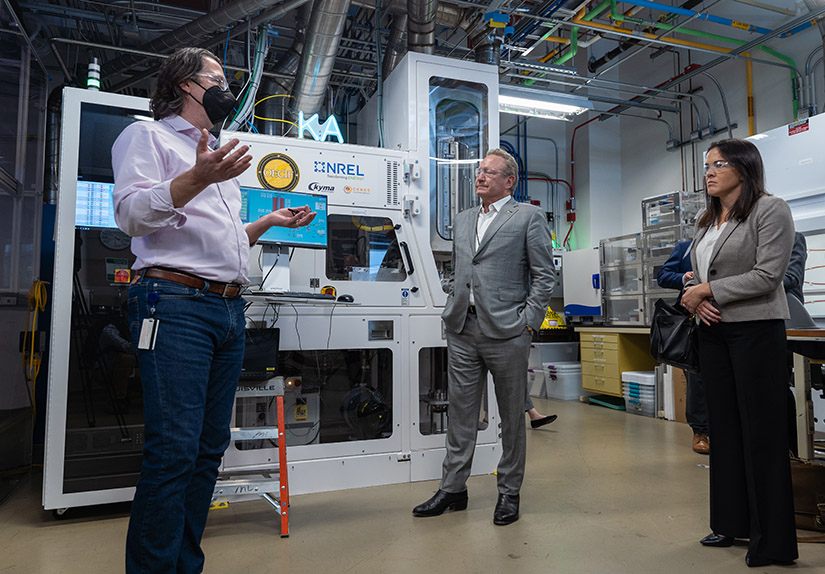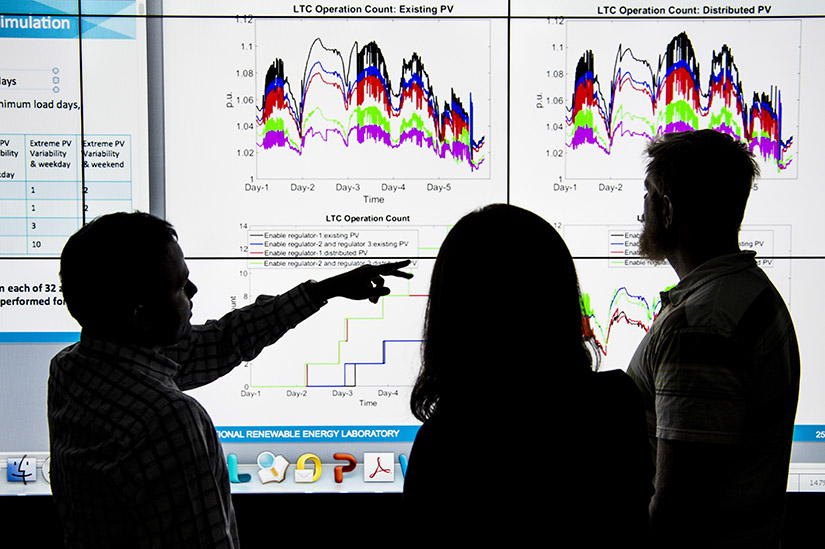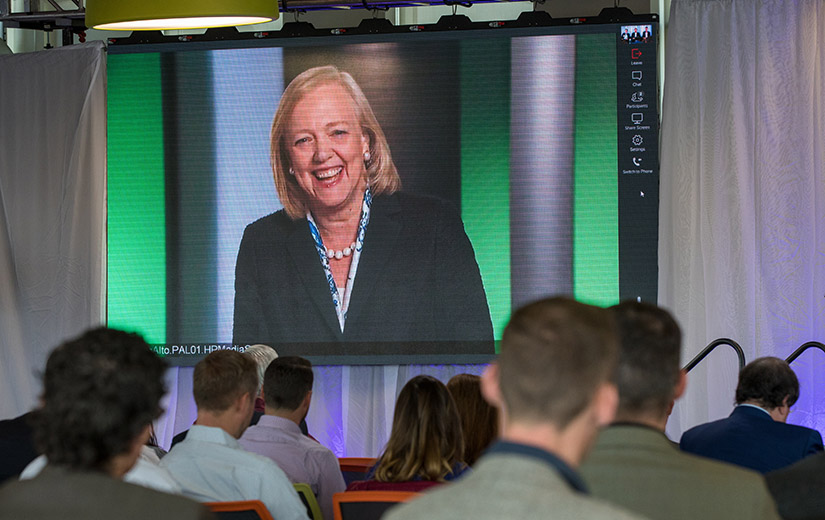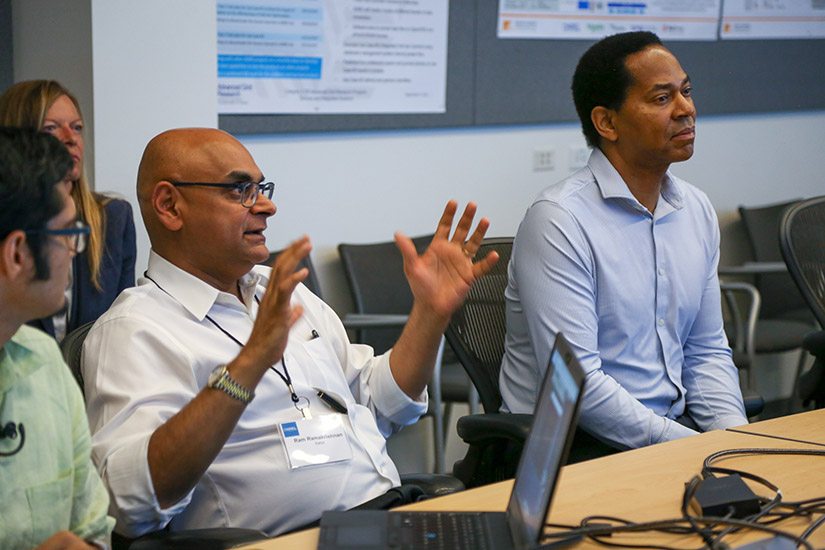NREL Delivers Impact Through Commercialization in Record Volume at Critical Time
Ensuring Partner Access to Capabilities and Accelerating Tech to Market Drives Strategy

The National Renewable Energy Laboratory (NREL) has been well known throughout its 45-year history for defining the cutting edge of renewable energy technology. Those who have been paying attention, particularly over the past decade, will also recognize NREL as the definitive leader in private partnerships across the Department of Energy’s (DOE’s) national laboratory system.
Central to NREL’s mission is the research and development of novel and desperately needed technologies germane to the imminent energy transition. Pursuing this mission, NREL generates tremendous impact alongside motivated partners, together maximizing decades of taxpayer investment in the laboratory. Over time, presidential administrations, Congress, and DOE have invested more than $15 billion in NREL. The resulting resources, capabilities, and expertise have positioned NREL as the go-to partner to companies large and small across the globe looking for answers to complex energy questions.
Partnership Facilitator
NREL Director Martin Keller refers to NREL’s role in partnerships as one of facilitation, rather than one of competition. During his opening remarks at NREL’s sixth annual Partner Forum held at the laboratory last August, Keller said NREL wants to do whatever it can to bring parties together. He noted that the timing to engage could not be better, because organizations around the world are committing, one after another, to aggressive, net-zero-aligned goals.
A palpable sense of urgency underpinned the 2022 NREL Partner Forum, with multiple attendees issuing pleas for collaboration over competition in one form or another, but as NREL Associate Laboratory Directory for Innovation, Partnering, and Outreach Bill Farris noted, that is easier said than done.
“If you’re a commercial enterprise, your goal is to run a profitable business,” he said. “There’s a willingness to take on new technology, but that ability is limited.”

Complications inherent to running a profitable business, such as intercompany competition, accurate market forecasting, supply chain costs, and new-technology risk mitigation, can make collaboration uncomfortable and complicated, but that is where NREL’s partnership program really shines. As a convener, NREL creates opportunities for companies to come together and work in a way that is mutually beneficial. As a national laboratory, NREL does not present a competitive threat and brings 45 years of expertise. And as a DOE-funded laboratory, NREL has a strong stable of unique capabilities that its leadership employs to create opportunities for willing companies to access.
NREL understands the need for climate urgency and has become decidedly impatient in the journey to create real impact and deliver resolution to the challenges of the energy crisis, leveraging partnerships to do it. In Fiscal Year 2022, NREL set a new single-year partnership contracting record, bringing in more than $130 million in new work.
“We understand it’s going to be through our partners that we realize the full impact of our research capabilities,” Farris said. “We need to be working with partners, because they’re going to be developing products and deploying new energy technologies at scale. We want to help our partners be successful. We won’t be the ones to commercialize technology. It’s our partners who will do that.”
One important way NREL helps companies feel comfortable picking up new technologies is by facilitating early-stage research to lay the groundwork for new technologies that may be too risky for a company to work on out of the gate. But five or 10 years down the road, NREL may have helped mature a technology to a point where a company can pick it up and commercialize it, and the laboratory may very well have developed a new capability in the process.
“Developing capabilities and making that available to the outside world—we see that as part of our mission expectation, whether it’s a startup or a major company,” Farris said. “Everyone at the lab should feel proud. Because of what we do at NREL, energy solutions are being developed and brought to broadscale adoption faster than they otherwise would have, and that’s the impact of NREL. We are doing the right thing. The world is better because of what we’ve been able to do.”
NREL’s partnership experience is both deep and wide. NREL manages multiple corporate-funded accelerators, designed to shorten the time it takes for startups with promising technologies to move those technologies from the bench to the marketplace. Simultaneously, NREL is working with some of the most powerful companies on the planet, such as recently signed partner and Australian mining powerhouse Fortescue Future Industries (FFI), which has an eye on developing 100% renewable green hydrogen solutions with broad applications.
Early-Stage Technology Incubator
The Wells Fargo Foundation’s Innovation Incubator (IN2) marked NREL’s first foray into the world of corporate-sponsored accelerator programs, which today is one of several at the laboratory.
“The reason the Wells Fargo program is as productive as it has been is that it catalyzes a mix of entrepreneurial activity from outside the lab,” Farris said. “Businesses can access all of that capability base at NREL, and we have a corporate sponsor behind it all. That’s a model that is very unique to NREL, and it’s proving to be very productive.”
Thanks to partnerships with major companies—including household names such as FFI, Amazon, and Google—NREL delivers substantial impact on a national and international scale, often stimulating new business in the state of Colorado as well. For instance, FFI selected Colorado as the location for its U.S.-based, worldwide, hydrogen R&D center with aspirations for producing zero-emission, green hydrogen from 100% renewable sources. And Colorado was selected largely due to the opportunity for FFI to leverage NREL’s expertise and capabilities in hydrogen research and renewables overall.
Driving the energy transition at scale requires deeper and longer duration engagements with more partners, and to support this, NREL is laser focused on smart growth to meet the demand. The laboratory is collaborating with the state of Colorado, which has plans to develop a plot of land near NREL’s main Golden, Colorado, campus into a business park focused on the energy transition. For partners, setting up a base with proximity to NREL will allow them to do as other NREL partners have done so successfully and leverage NREL’s resources and capabilities, working side by side with the world’s top energy researchers, scientists, and engineers.
Game-Changing Research Approaches
While NREL’s partnership expertise increases with each passing year, its depth already spans nearly half a century and crosses numerous important technological thresholds. In the early 1990s, NREL and First Solar took a unique approach to researching a new, thin-film solar cell technology called cadmium telluride, or CadTel for short. Nature Energy published a paper on crossing the 1-volt barrier. Three years later, NREL and First Solar published a paper together, again in Nature Energy, showing their CadTel cell reaching more than 20% efficiency, which meant it “achieved one of the lowest levelized costs of electricity among all energy sources as well as state-of-the-art field stability.”

More recently—about 11 years ago—NREL partnered with Hewlett Packard Enterprise and won an R&D 100 award “doing things neither company had ever done before,” according to Steve Hammond, NREL Computational Science Center director at the time and current senior research advisor. Together, they changed the way the high-performance computing industry works, introducing liquid cooling at scale and optimizing it to work with an energy-efficient data center, which, among other innovations, captures warm wastewater and uses it to heat buildings.
In 2018, Dublin, Ireland-headquartered power management company Eaton took its decade-long partnership with NREL to the next level, sending 15 employees to Golden, Colorado, to serve as the first private partner to set up shop, co-located, on an NREL campus. The first-of-its-kind agreement allowed Eaton and NREL researchers to work closely and efficiently to accelerate the engineering of new grid technologies.
Just last year—in March 2021—NREL released a groundbreaking study (LA100) conducted in partnership with the city of Los Angeles (LA) that verified LA can achieve reliable, 100%-renewable power as early as 2035.
“LA100 was a sizeable project,” Farris said, “and it was essentially a road map for the city of LA. LA has put together a capital plan between $70 billion and $90 billion that they’ll invest over the next 20 years, based on the project work they did with us, leveraging all that talent and capability.”
Several other cities have since followed suit, and NREL now has partnerships with them as well, conducting similar studies for communities of varied sizes and locations. The approach is an example of what Farris described as NREL taking on the biggest challenges and partnering with organizations with the same interest, noting that it is through them that NREL can really expand its reach.
“LA100 is a perfect example,” he said. “They knew what they wanted but didn’t have a great technical plan for getting there. Because we had this unique set of capabilities, we were able to help them solve their problem. We were looking for partners who were doing big and bold things and important things. It was pretty easy to see how we could help them. FFI is very similar to the LA story. They have a vision for where they want to take their companies. It’s a big challenge. They want to take on things that haven’t been done before. And that’s what we do at NREL.”

Farris acknowledged we’re still at the beginning of this energy transition and there is a lot of work left to do. “There will be a constant set of challenges,” he said. “We’re helping our partners navigate the early part of this transition.”
NREL’s impact and approach has developed slowly and steadily over time, and Keller has said frequently, and Farris has reiterated, that while the modern wind and photovoltaic (solar) industries took about 30 years to develop, if we are going to save the planet, we need more new and revolutionary technologies broadly available in the next decade. We just cannot afford to wait another 30 years. With its partners, NREL is on the task.
Learn more about how your organization can partner with NREL, and hear directly from NREL partners in NREL's Partner Testimonials video series.
This article has been updated to reflect an editorial change made after its original publication.
Last Updated May 28, 2025
